
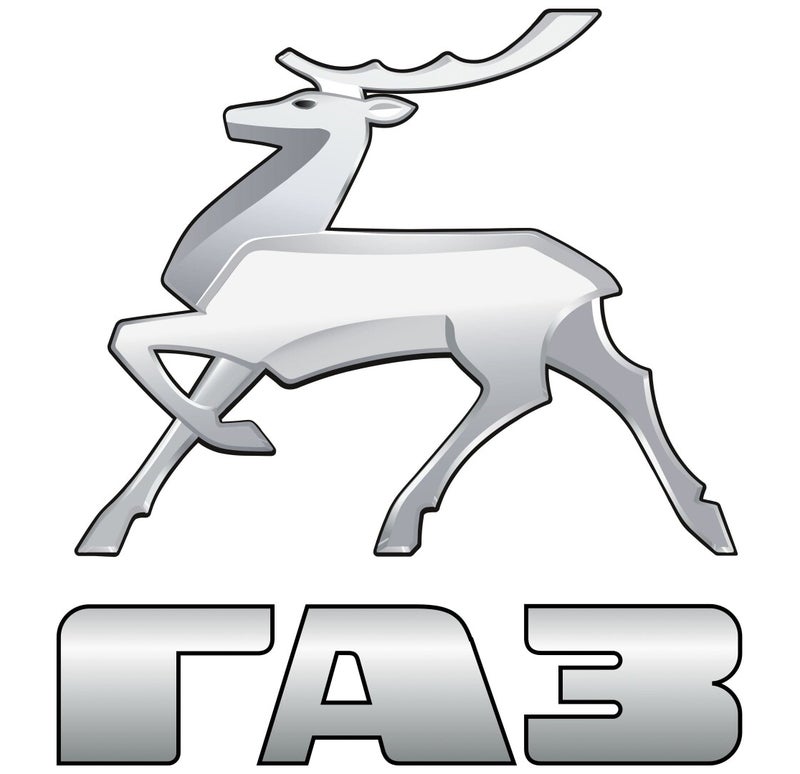




In May 1929 the Soviet Union signed an agreement with the American Ford Motor Company. Under its terms, the Soviets agreed to purchase $13 million worth of automobiles and parts, while Ford agreed to give technical assistance until 1938 to construct an integrated automobile-manufacturing plant at Nizhny Novgorod. Production started on 1 January 1932, and the factory and the first marque was titled Nizhegorodsky Avtomobilny Zavod, or NAZ, but also displayed the "Ford" sign. Its first vehicle was the medium-priced Ford Model A, sold as the NAZ-A, and a light truck, the Ford Model AA (NAZ-AA). NAZ-A production commenced in 1932 and lasted until 1936, during which time over 100,000 examples were built.


1932-1936 NAZ-a
In 1933, the factory's name changed to Gorkovsky Avtomobilny Zavod, or GAZ, when the city was renamed after Maxim Gorky; similarly, models were renamed GAZ-A and GAZ-AA. From 1935 to 1956, the official name was augmented with imeni Molotova (literally, named after Molotov).
During the war, GAZ assembled Chevrolet G7107 and G7117 (G7107 with winch) from parts shipped from the USA under Lend Lease.
Experience with the A and the M1 allowed the GAZ engineers to develop their own car model independently of Ford. Called the GAZ-11, this more upscale model entered production in 1942 and remained in limited wartime production until 1946. The M2's bodyshell entered limited production in 1941, mounted on a four-wheel drive chassis and sold in small quantities as the GAZ-61.

1936-1943 M1
After WWII GAZ engineers worked to develop an all-new car model to enter production once hostilities ended. Called the GAZ-M20 Pobeda (Victory), this affordably-priced sedan with streamlined, fastback styling, entered production in 1946 and was produced by GAZ until 1958.
The GAZ-21 made its public debut in 1955, with a three cars on a demonstration drive from Moscow to the Crimea, two automatic models and a manual. It was launched in 1956 and became a symbol of the whole Soviet epoch.
In the 1960s GAZ plant renewed its truck range by launching such models as GAZ-52, GAZ-53А and GAZ-66. In the 1960s and 1970s, the plant was overhauled and updated; 1962 saw it fitted with the Soviet Union's first automated precision shop. GAZ produced its ten millionth vehicle in March 1981. In the late 1990s GAZ was deemed to be the best managed Russian automotive manufacturer.
m20 pobeda
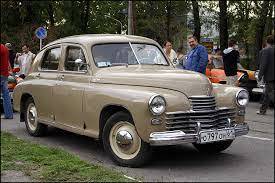
1946-1958



The first Pobeda was developed in the Soviet Union under chief engineer Andrei A. Liphart. Originally intended to be called "Rodina" (Homeland), the name "Pobeda" (Victory) was a back-up, but was preferred by Joseph Stalin. The name was chosen because the works started in 1943 at Gorky Avto Zavod (GAZ, "Gorky Car Plant"), when victory in World War II began to seem likely, and the car was to be a model for post-war times. The plant was later heavily bombarded, but work was unaffected. Styling was done by "the imaginative and talented Veniamin Samoilov". The GAZ-M20 Pobeda was one of the first Soviet cars of original design and moreover introduced a new vogue in automobile design; only the front suspension and, partially, the unitized body were influenced by the 1938 Opel Kapitän. It was one of the first cars to introduce ponton styling with slab sides, preceding many Western manufacturers. The M20 was the first Soviet car using entirely domestic body dies; it was designed against wooden bucks, which suffered warping, requiring last-minute tuning by GAZ factory employees.
Licensed production under the name Warszawa continued in Polish FSO until the 1970s.
12

1950-1960 zim 12


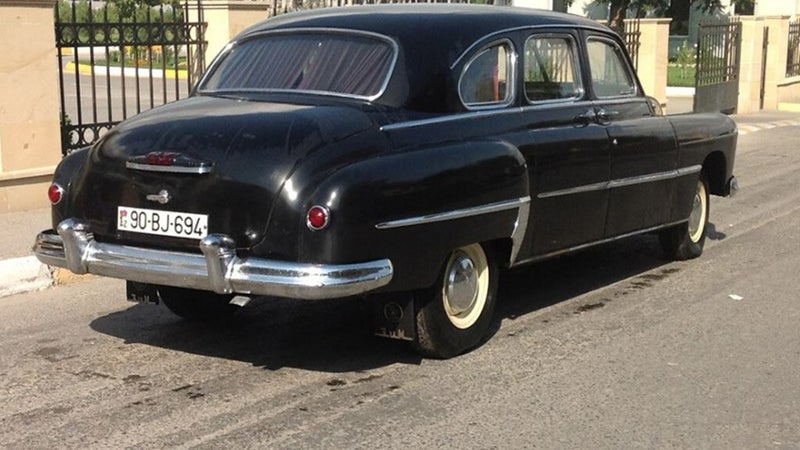
The ZIM-12 was a Soviet limousine produced by the Gorky Automotive Plant from 1950 until 1960. It was the world's first mass-produced ponton limousine,[citation needed] the first executive car produced by GAZ and the first one to have the famous leaping deer hood ornament. The car was built to serve mid-rank Soviet nomenklatura, but was also readily available as a taxi and ambulance. Unlike its successors, ZIM was the only Soviet executive class full-size car that was actually made available for private ownership. A total of 21,527 examples were built.
The M12 used a lengthened Pobeda monocoque chassis and the 3,485 cc inline six engine, producing 95 PS.
21

1956-1970 m21

first series 1956–1958

second series 1959–1962

third series 1962–1970
The GAZ M21 Volga was produced from 1956 to 1970. The first car to carry the Volga name, it was developed in the early 1950s. Volgas were built with high ground clearance (which gives it a specific "high" look, contrary to "low-long-sleek" look of Western cars of similar design), rugged suspension, strong and forgiving engine, and rustproofing on a scale unheard of in the 1950s. The Volga was stylistically in line with the major American manufacturers of the period in which it was introduced, and incorporated such then-luxury features as the reclining front seat, cigarette lighter, heater, windshield washer and 3-wave radio.
When in 1959 the six-cylinder line of GAZ cars was discontinued, Volga M-21 became the biggest and most luxurious car officially sold to individual owners in the USSR in large quantities, though its price was very high and made it unavailable for most car buyers. 639,478 cars were produced in total.
chaika

1959-1981 gaz-13
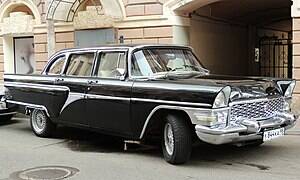


The GAZ-13 Chaika debuted in 1958 and exhibited internationally at the Brussels motor show. It was produced from 1959 to 1981, with a total of 3,179 built. The GAZ-13 was powered by a 195-hp SAE gross 5.5 L V8 and driven through a push-button automatic transmission of a similar design to the Ford Cruise-o-Matic unit. It was offered as a saloon (GAZ-13), limousine (GAZ-13A), and four-door cabriolet (GAZ-13B) with an electrohydraulic top. The cabriolet was made in 1961 and 1962 for official parades. A station wagon version was also offered as hearse or ambulance.
series 24

1968-1977 24 series I
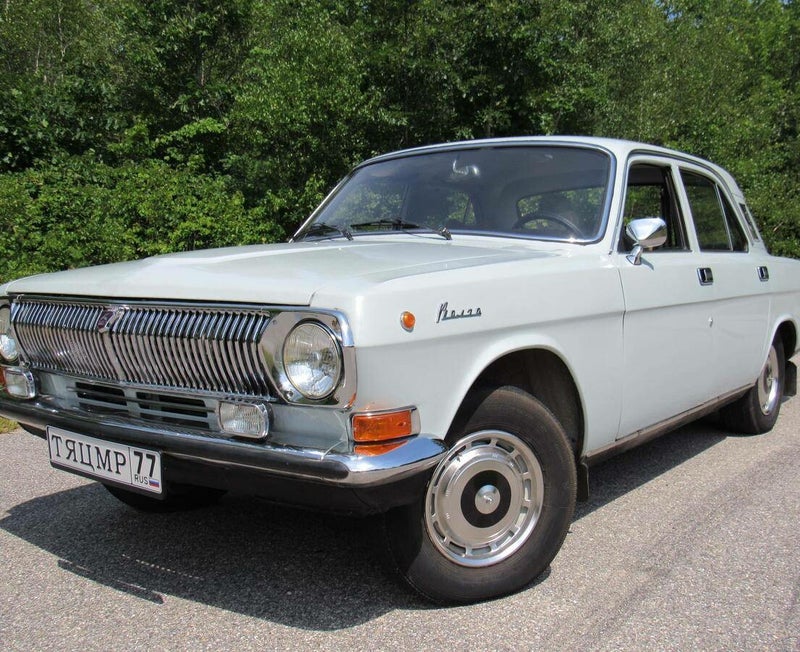

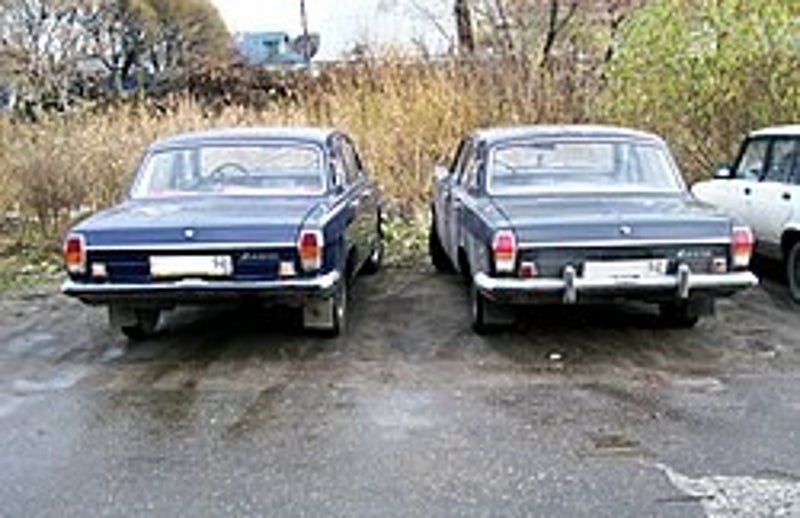
Development of the GAZ-24 (then called M-24) finished in 1966 when several prototypes were built. The Volga GAZ-24 was unveiled towards the end of 1967. However, only 32 units were built in 1968). primarily for road tests, with another 215 units built in 1969. 1968/69-built Volgas are often called "pre-serial" because full-scale manufacturing started only in 1970 (18,486 units built). Distinctive feature of the very first several prototypes were two outside rearview mirrors fixed on front fenders. Most of the pre-serial and all serial cars got one mirror placed on front left door.
The GAZ-24 was developed to replace the outdated Volga GAZ-21 developed in the 1950s. The car was designed to last for years in severe road conditions, and its reinforced unibody construction gave the Volga extra weight if compared to foreign analogues. Yet power steering was not even an option, and it gained the nickname "barzha" (barge).
- 2.5 L ZMZ-2401 I4
- 5.5 L ZMZ-2424 V8
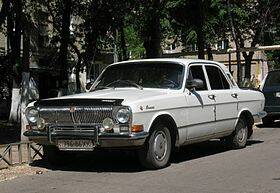
1977-1985 24 series II



The GAZ-24 was displayed at the London Motor Show in 1970. Full-scale manufacturing started 15 July 1970. Export sales began in 1971. During 1970-74 the Volga remained almost unchanged. Only minor modifications took place in 1972-73, when the car got new trunk decklid lock, flat ashtrays in rear doors instead of early ashtrays that were built in rear doors armrests, new rear bumper and new radio with more pleasant appearance and modified construction. In 1973 dashboard with simulated wood insert appeared (also there was a "silver" grained finish, used until 1974). After 1973, the ignition switch was moved from the dashboard to under the steering wheel to prevent knee injuries in road accidents, although that was inconvenient for the driver. Also in 1974, the Volga got additional C-pillar parking lights on (something like opera lights). The 24-01 was joined in 1977 by the 24-07, which was fitted to use liquified propane.
The original strip speedometer was changed to dial 1975, the same year the ignition switch was moved from the dash to the steering column. Beginning in 1977, seatbelts began to be offered. In 1978, about 1,000 right-hand drive 24-56s were built for export to India, Pakistan, and Singapore; powered by the Peugeot XDP 4.90 engine, they were not assembled in Belgium, and were the last right-hand drive vehicles GAZ built.

1985-1992 series III



From late 1974, a V8 powered version was produced in small numbers, the GAZ 24-24. It received an aluminium 190 PS 5,530 cc ZMZ 24-24 V8.
In 1976-78 the car was completely refreshed. To improve the safety, bumperguards, yellow front fog lamps, secondary turning signals on front fenders and seat belts (both front and rear) became standard equipment. The car got modified interior. The Volga GAZ-24-10 was an updated version of the GAZ-24 built from 1985 to 1992.
The GAZ-24 Volga was exported to many countries, from Indonesia and Latin America to Western Europe. Right-hand-drive export versions also existed. In Europe, one of the most popular Volgas were cars, both sedans and wagons, assembled in Antwerp by Scaldia-Volga S.A.. These cars were shipped to Belgium without engines, where they were fitted with Indenor diesels (the same as in the Peugeot 404), a 2.1 litre unit with 62 PS until the 2300 D was introduced for 1980. Cars that were sold in Europe often had such features as metallic paint, simulated vinyl roof, leather interior and other luxuries. Station wagons sometimes had simulated "wood" decoration and often a rear window wiper and heater. These features were usually installed by local European GAZ dealers.
As in most European markets, the car found its main market amongst taxi drivers, who appreciated its low price and robustness, while being less concerned with resale values.

chaika


1977-1988 gaz-14


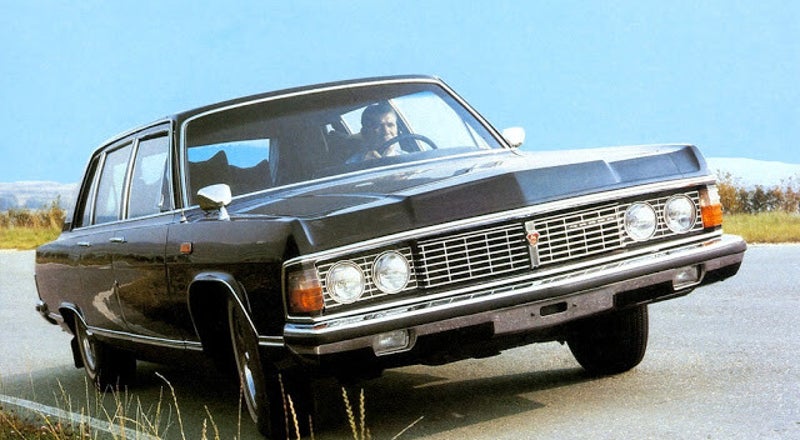
The vintage 1950s-style GAZ-13 was succeeded by the more modern GAZ-14 Chaika introduced in 1977 (although production of both versions overlapped by several years). Although visually modern and fitted with the latest electronic luxury features, the GAZ-14 was in fact built around the drivetrain and undercarriage of the older model. Chaikas were mainly used by local governors, as the more luxurious ZiL was exclusively for heads of state, but in some cases it found its way up to the top, as it did in Cuba where it was used by Fidel Castro.
3101

1982-2010 3101

3102


In 1976, the first prototypes were shown and under the new Soviet automobile numbering system, the car was christened as the GAZ-3101. Visually the vehicle included a completely new fascia, reminiscent of the more muscular fashion of North America, framed by East German built square headlights with water jet washers, a more angular chromed bumper with resin lining, fog lamps suspended below and the trademark "Baleen" grille. At the same time, conservative European influence can also be traced.
For the next two years GAZ was left with a car approved for production, but without the necessary go-ahead from Moscow. Several reasons played a role, but most of all was the same administration of USSR's planned economy that forced the third generation Volga into a GAZ-24-derived replacement. During this time they developed a new engine, and in simplified trim, the new car was re-christened as GAZ-3102.
Despite a higher price, the GAZ-3102 enjoyed relatively good sales, and remained in demand. Compared to the GAZ-31029, it had a notably higher reputation for build quality. When the former was to be retired, and replaced with the GAZ-3110, the 3102 was fitted with 3110 upgrades, but not upgraded externally, as its look had become classic.
3105
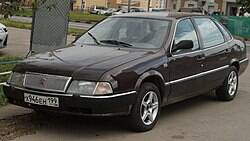
1992-1996



GAZ set out to design a new generation of front-, rear- and all-wheel drive cars, representing the family GAZ-3103, GAZ-3104 and GAZ-3105 respectively. Influenced by the Audi 100, the family was to replace the 1960s Volga cars, both 24-10 and 3102. The vehicles featured MacPherson strut suspension, V8 engine with fuel injection, and CV front and rear axles.
The hard economic crises that the post-Soviet Russia was faced with meant that GAZ had no means to launch the cars into production. Originally GAZ hoped to re-launch its 3103 family nonetheless, but as the years went, and despite the economy improving, its mid-1980s exterior design became archaic.
3110
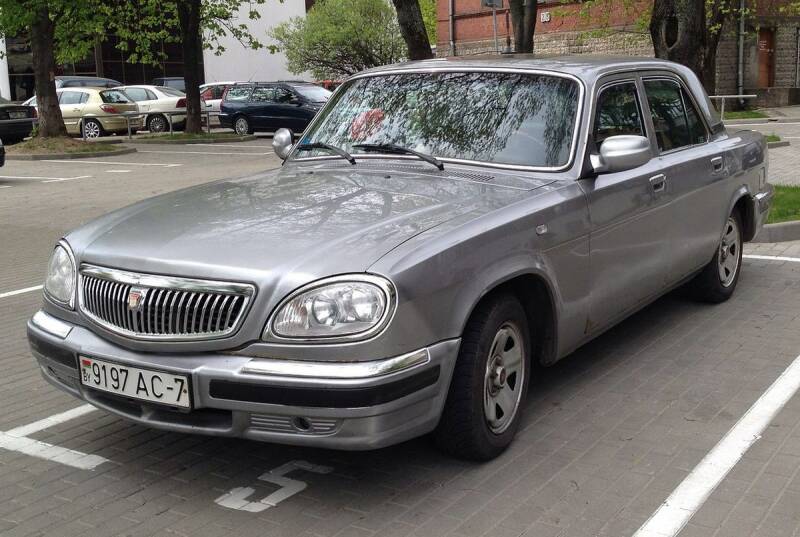
1996-2004 sedan
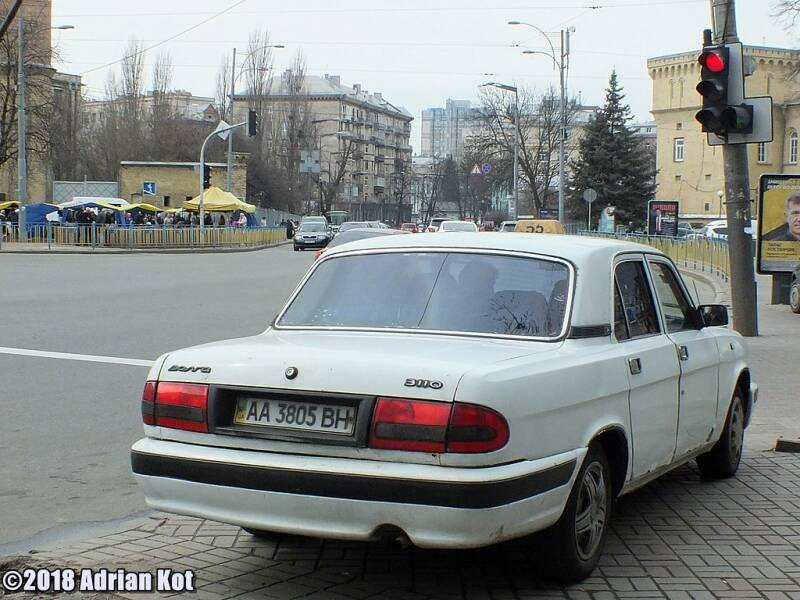


the GAZ-3110 was an instant success, despite its aged profile, GAZ finally had a car that could bridge a gap before the planned new vehicle (GAZ-3111) entered in the early 2000s. Though hardly a rival for new foreign marques, it certainly did snatch their re-sale market in its favour. Prices in 1997 was US$8800 for the budget version with 402 engine, and US$12,900 for the 406 equipped. Even the 1998 Russian financial crisis hardly affected the Volga's demand, quite the contrary, GAZ capitalised on marketing it as an inexpensive alternative.
However, the car was still plagued by the common reliability issues of all 1990s built cars: poor assembly quality, faulty electronics, and low service culture, especially for the fuel-injected 406 models. The latter engine in 1999 already had its first refit and a compression ratio reduced to 9.2 to avoid detonation, reducing the power from 150 to 131 hp.
3111
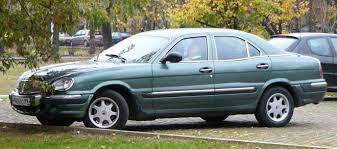
1998-2004



The GAZ-3111 was scheduled to launch in 2000, but the factory's new owner Oleg Deripaska, was unimpressed with the vehicle visually and the high price of the car prevented any interest to sales, as a result only 428 cars were built as part of the pre-production batch. Nonetheless the car did influence the next facelift of the main Volga - the GAZ-31105, which among with a redesigned fascia finally rid the Volga of the archaic kingpins from the front suspension in 2004.
In 2002 the car was awarded zero stars out of a possible four by the Russian ARCAP safety assessment program.

SibAl
In November 2000 GAZ was acquired in a hostile takeover by SibAl. In March 2003 GAZ declared that the production of passenger cars was no longer a priority for the company, and plans to release a new GAZ-3115 model had been abandoned. However when DaimlerChrysler modernized its Sterling Heights Assembly plant in 2006, the old Chrysler Sebring / Dodge Stratus assembly line and tooling was sold to GAZ and was shipped to Nizhny Novgorod in Russia. To produce the vehicle in Nizhny Novgorod, GAZ built a modern production facility with a high degree of automation. GAZ designed a similar vehicle as the Volga Siber from 2008 until the end of 2010 when it was phased out due to the global economic crisis. Since then GAZ car facility is used for contract manufacturing for Volkswagen and General Motors.

2008 volga siber
In November 2010 the company decided to end production of the Volga Siber, its last GAZ passenger car model, and to discontinue the GAZ Volga range. The GAZ group would continue to produce vans and light trucks only.
12 zim hyperliner
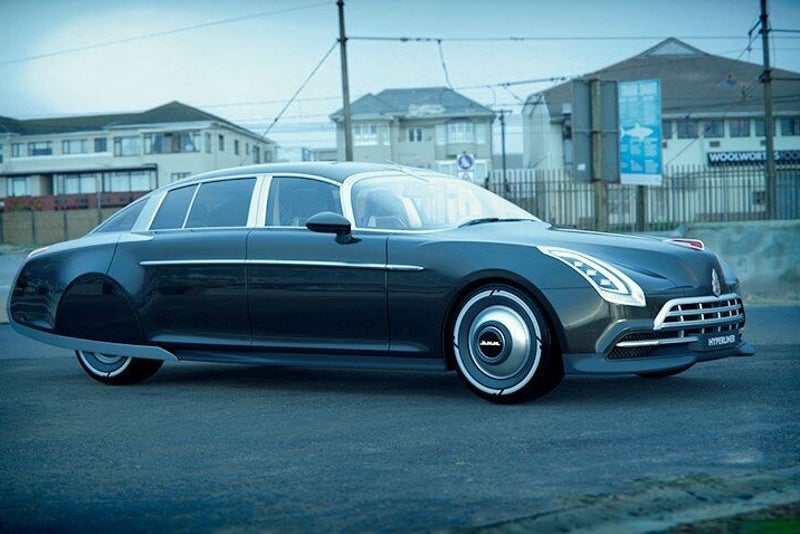



2019
Famous Russian designer Sergei Barinov came up with this new design project Executive sedan under the name "GAZ-12 ZIM Hyperliner". The project, designed in the style neoretro, can easily surpass the style of the project "Cortege" (now mark Aurus). It is "inspired" by Stalin limousine ZIS-110/-115 (in turn, created the patterns of the American model Paccard-180 1942). Sergey Barinov reinterpreted this famous Soviet model as GAZ-12 ZIM (whose face, in turn, was influenced by the models of the Buick Eight, 1948).
The GAZ-12 ZIM is decorated with closed rear wheel arches, recognizable "Zimouski" grille and raised front wings a La Buick Le Sabre, 1938.

rare russian race cars
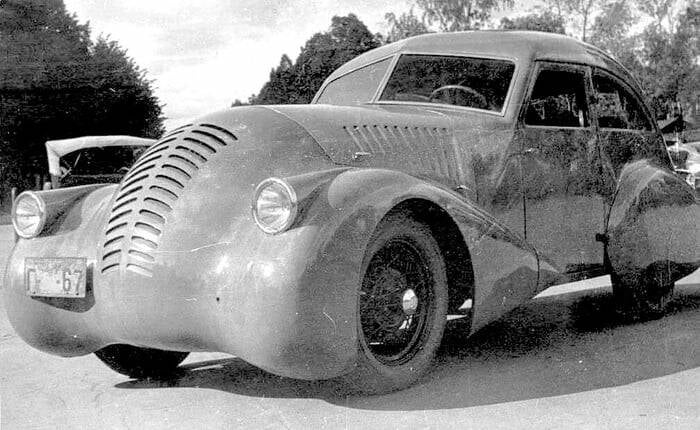
GAZ A-Aero (1934)
Built in 1934. Only one GAZ-Aero was produced by engineer Aleksei Osipovich. Its based on GAZ-A. Body is wooden and covered with metal plates. Standard engine was improved with aluminum head and compression ratio was increased. The speed of this car was still no match to other sport cars. Engine: 4 cylinder gasoline, 3,285 liters, 48 hp @ 2300 rpm.

GAZ GL-1 (1938)
Produced in 1938. This GAZ-M1 based race car is he fastest Soviet race car before the war. Original GAZ-M1 engine was boosted to 65 hp instead of 50 hp. After some testing a new 6 cylinder 100 hp engine from GAZ-11 was installed and some details were redesigned (new wheel caps, dome abouve driver’s head, rounded grill plating). With original 65 hp engine the top speed was 148 km/h but when 100 hp engine was installed the top speed was 162 km/h!

GAZ M-20 Pobeda Sport (1950)
Sports car based on the production model GAZ-20 “Pobeda”. In 1951, three vehicles were equipped with rotary blowers “Rutz,” two carburetors replaced by one. Thus the maximum power increased to 105 hp, and speed – up to 190 km/h!
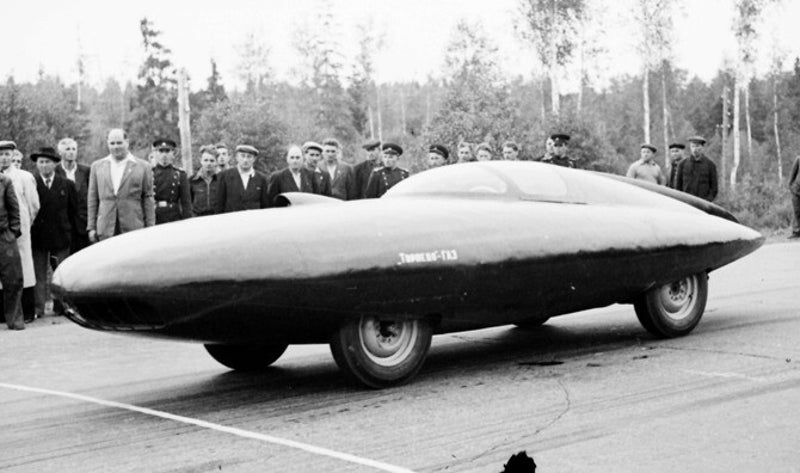
GAZ Torpedo (1951)
Four-cylinder 2,4 l engine that produces 105hp at 4000 rpm. Maximum speed – 191 km/h.
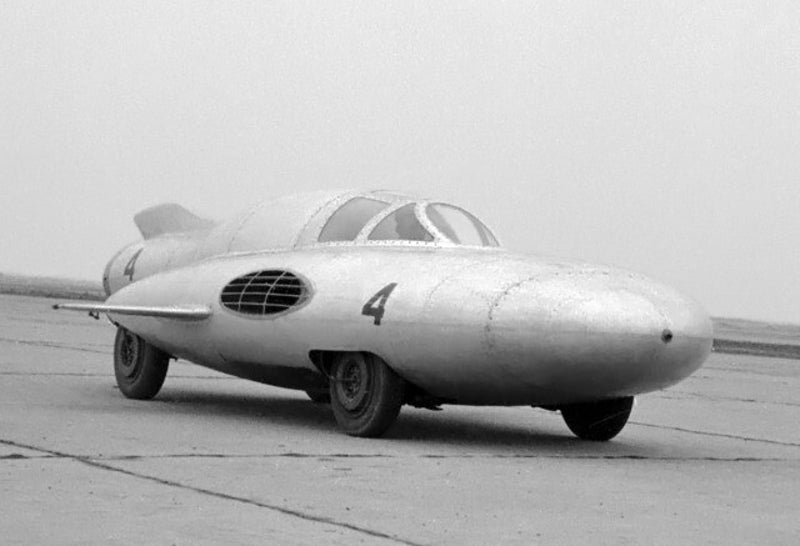
GAZ TR Arrow (1954)
GAZ TR “Arrow”, with a jet engine. Settlement speed of the device had to make about 500 km/h, but due to the lack of specially prepared route and high-speed tires the maximum speed according to the program of test arrival should not have exceeded 300 km/h. Built in 1954.

This research and development automobile and engine institute was established on 14 March 1920 on the basis of Scientific Automobile Laboratory of Scientific and Technical department of VSNKh. This laboratory was established on 16 October 1918. From 1924 the institute permitted purchases of foreign automobiles and automobile accessories. The first original automobile, the NAMI 1, had been developed by 1927 (the first car of the USSR).
During the 1930s the institute became the leading development department of the Soviet automotive industry. Following that year they developed and produced the first Soviet trolleybuses, created several tractor models and several lorry models. For the Red Army half-tracks and armored vehicles had also been actively developed.

The NAMI-1 is the first car, created in the USSR. It was developed in 1925 by Scientific Automobile Motor Institute (NAMI) on the basis of the graduation project by a young engineer Konstantin Andreevich Sharapov. 403 pieces of the NAMI-1 were made from 1927 till 1930. Today two survived chassis, two factory-assembled cars and several familiar units and aggregates are known today.

aurus

In 2013, NAMI began development on a new Russian presidential state car to replace the then-current Mercedes-Benz S 600 Pullman Guard.
In 2018, the new Russian presidential state car and motorcade vehicles were introduced under the Aurus Kortezh (Russian for cortege or motorcade) line of vehicles. This includes the Senat sedan and limousine, Arsenal van, and Komendant SUV. The three vehicles are named after Kremlin towers.
senat
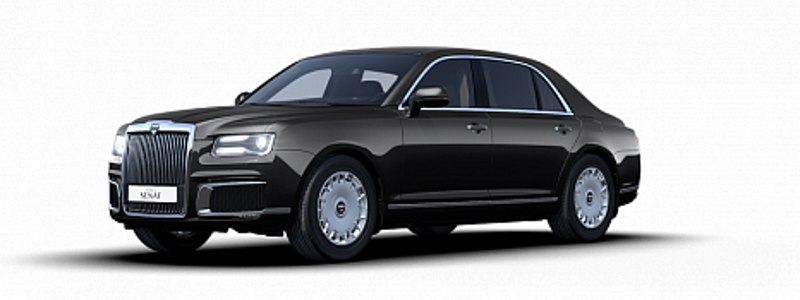
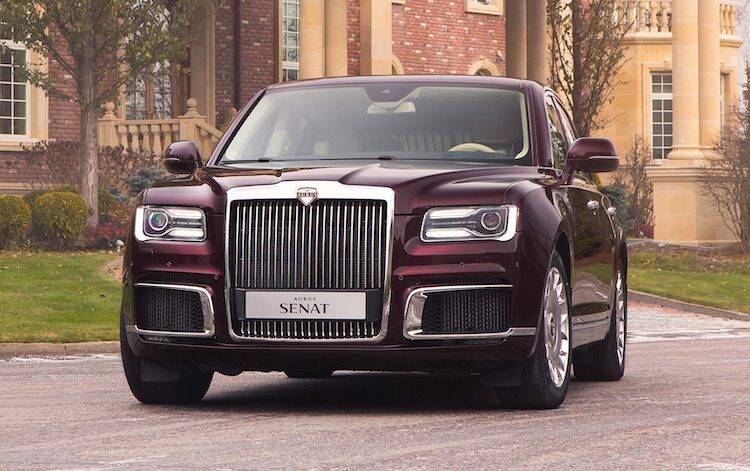
2021-present



The Aurus Senat (Russian: Сенат) is a luxury full-size sedan by Russian automaker Aurus Motors and developed by NAMI in Moscow, Russia. The armoured limousine is powered by a 4.4 litre V8 engine developed by NAMI, with a 6.6 litre V12 becoming available at a later date. It is the Presidential state car of Russia. Development of the Senat started in 2013 with the car (in civilian S600 or official L700 versions) being put into production in 2021 at the Sollers JSC factory in Yelabuga.
The Aurus Senat is part of the Kortezh series, which will eventually include a van and an SUV. The Senat was shown publicly for the first time at the Moscow International Automobile Salon in September 2018. Porsche and Bosch Engineering are reported to have been involved with the development of the engine.
aurusmotors.com
komendant

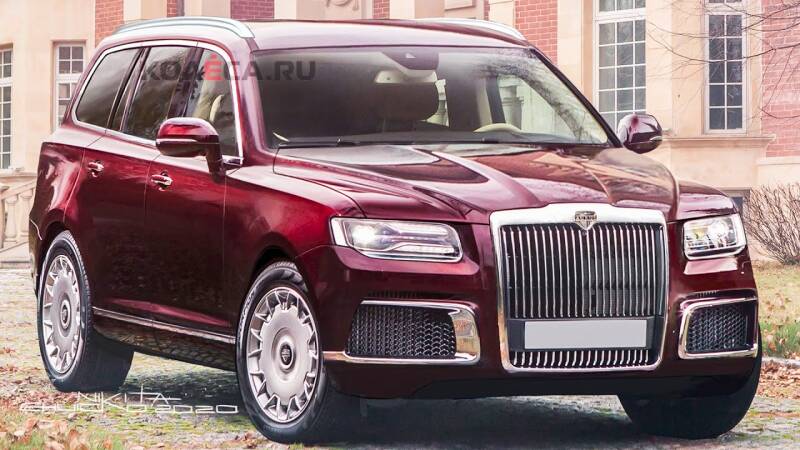


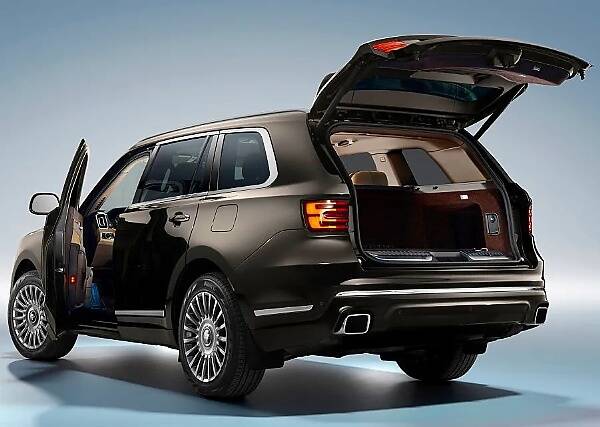
The Aurus Komendant is a luxury SUV produced by Russian automaker Aurus Motors and developed by NAMI in Moscow, Russia. It is named after the name of the Komendantskaya Tower of the Moscow Kremlin. The Komendant is part of the Kortezh series of luxury vehicles, which includes the Senat limousine and the Arsenal minivan.
Production was planned for the end of 2020; later these plans were postponed to 2022 and later 2023. The official plan for year 2023 for the SUV is 200 cars. The car's appearance has been compared to that of the Rolls-Royce Cullinan, with tail lights comparable to the Bentley Bentayga's.
The engine will be based on a 4.4 V8 hybrid power plant, producing 598 hp. It is mated to a 9 speed automatic transmission. Topspeed is 220 km/h and 0-100 takes 6.5 seconds.








Create Your Own Website With JouwWeb